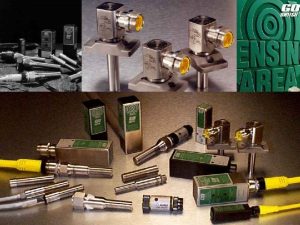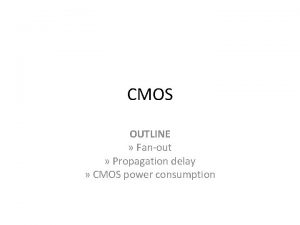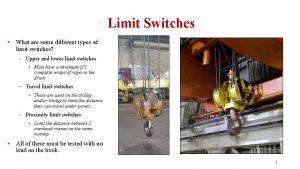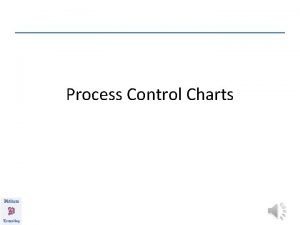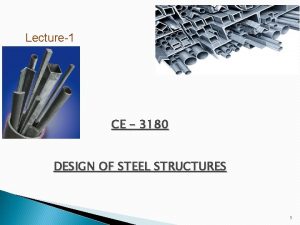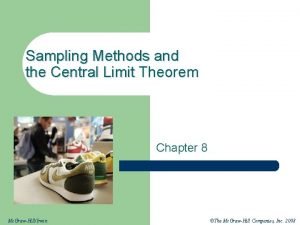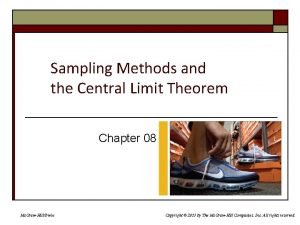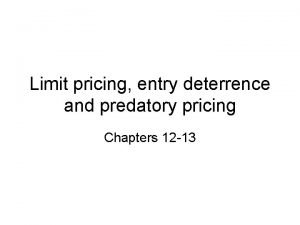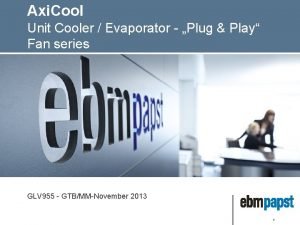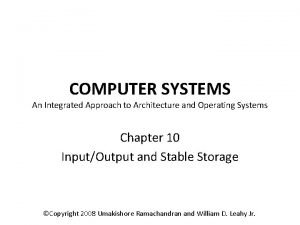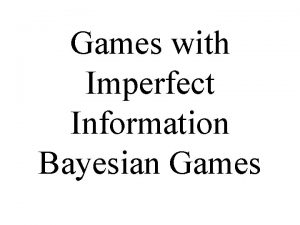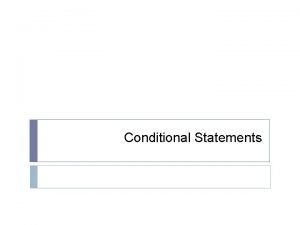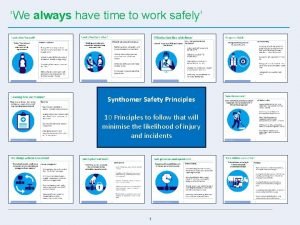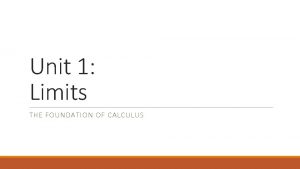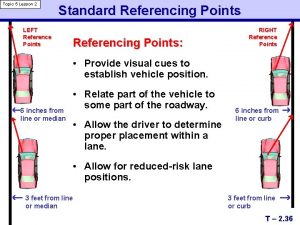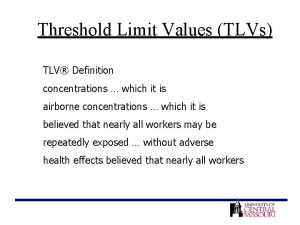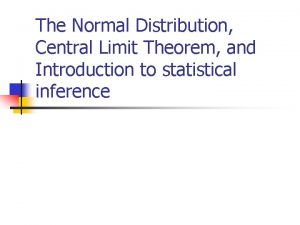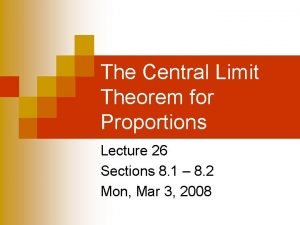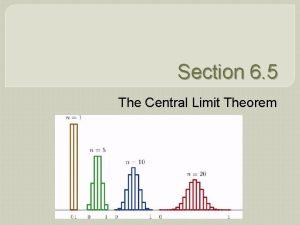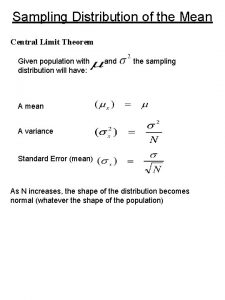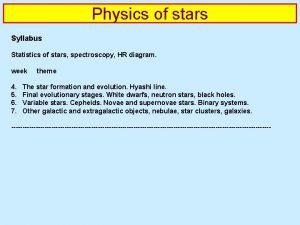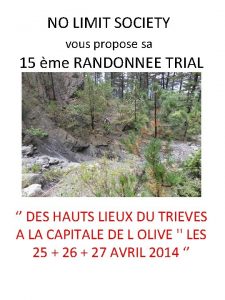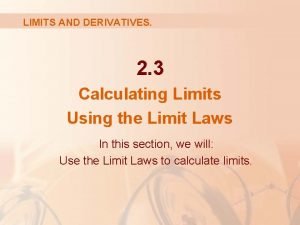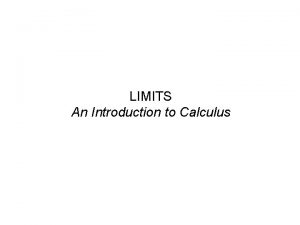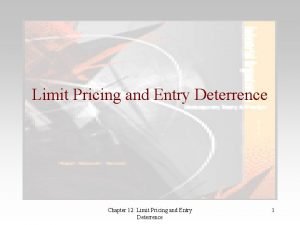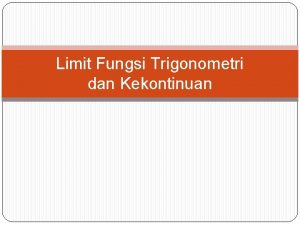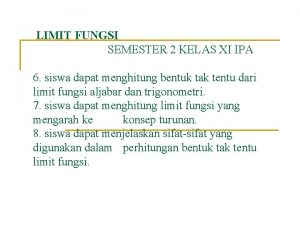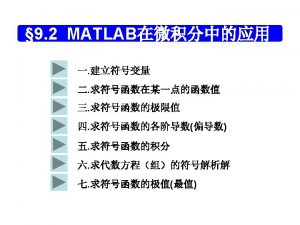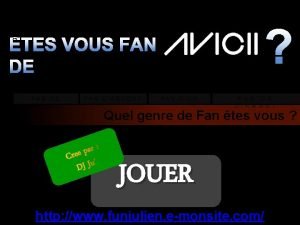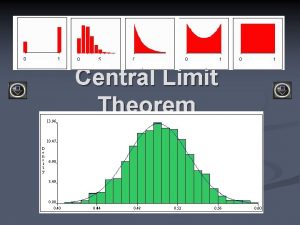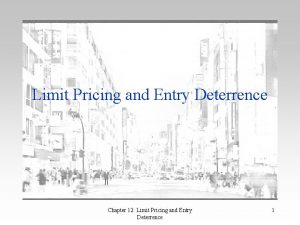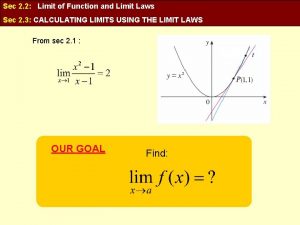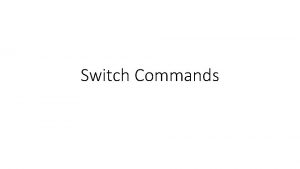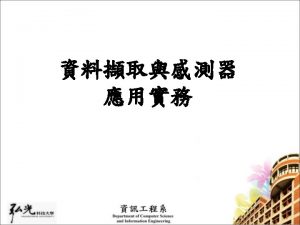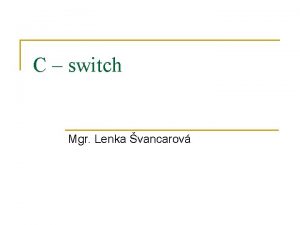Fan Switch and Limit Switch Information FAN Switch




























































- Slides: 60

Fan Switch and Limit Switch Information

FAN Switch

Fan Switch 1. The fan switch controls the motor for heating. 2. The fan switch contacts are NO. 3. It closes on a rise in temperature. 4. It is physically located in a location on the furnace where it will ‘sense’ the heat from the heat exchanger. 5. It has a cut-in temperature setting, and this is the temperature which will make the contacts close and the fan will operate.

Fan Switch 6. It has a cut-out temperature setting and this is the temperature which will open the contacts and the fan will stop. 7. Some fan switches have adjustable CI and CO settings. Some have fixed CI and CO settings.

Fan Switch 8. A likely CI will be 130 o. F. 9. A likely CO will be 100 o. F. 10. The DIFFERENTIAL will be 30 o, in this example. 11. The fan switch is ALWAYS in the ‘POWER’ or line voltage circuit.

This presentation will continue with the fan switch that was used with ‘older’ gas furnaces and is used on both old and new oil furnaces.

Here is an example of a fan switch. It also includes the limit switch, which will be presented later.

The fan switch is on the left.

The fan switch has an ‘input’ terminal labeled ‘line. ’ Hole for wire.

The wire is inserted and released when you push on this tab. Otherwise it is difficult to get the wire in and out.

The fan switch has an ‘output’ terminal labeled ‘load. ’ Hole for wire.

The wire is inserted and released when you push on this tab. Otherwise it is difficult to get the wire in and out.

Cut-out setting, which can be adjusted on this fan switch.

Cut-in setting, which can be adjusted on this fan switch.

Indicator mark on plastic housing to note the temperature of the fan or limit switch.

Sometimes the fan switch will have a small electric heater within its housing. This is called a ‘fan assist’ heater. The heater will be energized at the same time there is a call for heat and the fan contacts, which are heat dependent, will either close based on the physical heat from the furnace heat exchanger, or from the physical heat of this heater.

There are two applications for this heater.

1. Some manufacturers use this method to bring the fan on ‘sooner’ than it would, based on the physical heat from the heat exchanger. This is done to raise the efficiency rating of the furnace.

2. This method is used to keep the fan operating in a down-flow furnace application. The fan is on top of the furnace heat exchanger and when the fan comes on, the heat rising up the furnace will be blown down and away from the fan switch. Since it is dependent on the heat from the heat exchanger, it will cool off and stop the fan. Then the cycle will start all over again and the fan will just ‘short cycle. ’

Here is an example of a fan with the ‘assist heater. ’ These two terminals are for the heater.

Here is a schematic showing the heater.

Sometimes this style of fan switch has a ‘button’ on it. The button functions such that when it is ‘pushed’ in, the fan switches contacts will be ‘manually’ operated and the fan will operate continuously. When the button is ‘pulled’ the fan switch works automatically cycles with the heat from the heat exchanger.

This fan/limit switch model does NOT have the button, but you can see the ‘slot’ for it as well as the text on the housing as to how to work it.

LIMIT Switch

Limit Switch 1. The limit has NC contacts. 2. The limit is used to provide safety in the event the temperature of the equipment should exceed a safe operating level. voltage) circuit or the CONTROL (low voltage) circuit.

Limit Switch 4. The limit has a cut-out that is usually around: a. 200 o. F for barometric draft furnaces b. 180 o. F for high efficiency furnaces c. or whatever the manufacturer specifies

Here is an example of a limit switch. It also includes the fan switch.

The limit switch is on the right.

The limit switch has an ‘input’ terminal labeled ‘line. ’ Hole for wire.

The wire is inserted and released when you push on this tab. Otherwise it is difficult to get the wire in and out.

The limit switch has an ‘output’ terminal labeled ‘load. ’ Hole for wire.

The wire is inserted and released when you push on this tab. Otherwise it is difficult to get the wire in and out.

Cut-out setting, which can be adjusted on this limit switch. Cut-in setting is NOT adjustable.

Indicator mark on plastic housing to note the temperature of the fan or limit switch.

FAN and LIMIT The fan and limit switches may be separate components or they may be part of the same housing as shown on the next slide. In this situation the components are called a ‘combination fan/limit switch. ’

Here is an example of a combination fan/limit switch.

Here is another example of a combination fan/limit switch.

The pointer points to the fan ‘off’ or cut-out setting. It has a fixed differential of 25 degrees. So if the ‘off’ setting is 100 degrees, the ‘on’ or cut-in temperature will be 125 degrees.

Terminals for the fan switch.

The limit has a fixed cut-out and a fixed differential. No adjustment.

Terminals for the limit switch. (Hard to see)

Here is an example of a ‘limit’ only switch.

Here is another example of a ‘limit’ only switch.

FAN and LIMIT As was stated earlier, the FAN switch is ALWAYS in the POWER circuit, but the LIMIT switch may be found in either the POWER circuit or the CONTROL circuit.

This circuit has both the fan switch and the limit switch in the POWER circuit. In this situation, there may be a jumper from the limit to the fan and that will require only one wire from the source – L 1. Jumper

Here is an example where both the fan and limit switches are in the POWER circuit. Jumper tab so L 1 can get to fan switch. One wire coming in – L 1

Jumper in this situation is NOT a wire but a piece of copper, known as a ‘tab’ that goes between the limit ‘line’ side to the fan ‘line’ side.

This circuit has the fan switch in the POWER circuit and the limit switch in the CONTROL circuit. In this situation, the jumper tab would need to be removed.

Look closely and read the note on the plastic housing.

Jumper ‘tab’ has been removed. In this situation, the fan is in the POWER circuit and the limit is in the CONTROL circuit. So tab must be removed by technician in the field.

Fan and limit switches as found on ‘newer (modern)’ gas equipment.

The limit is still temperature dependent, but it is not part of the combination fan/limit switch anymore. It is a separate switch. Following are two examples.

Limit sensor (bimetal switch) Look for the number after the ‘L’ and that will be the cut-out temperature.

Limit sensor (bimetal switch) Look for the number after the ‘L’ and that will be the cut-out temperature.

The fan switch is no longer temperature dependent. It is timed via the solid state control board. DIP switches are used to set up the time. Refer to manufacturers directions as to position of DIP switches for timing. Additional information can be found in your textbook and on the equipment in the HAC lab.

Fan Switch DIP switches.

Miscellaneous Information (for tests)

When troubleshooting, what are three circuits a technician might have to troubleshoot? 1. Power 2. Control 3. Safety

What are the first three things you do when you arrive on the job? 1. ASK the customer what they observed. 2. Check that the system switch on thermostat is properly set. 3. Set thermostat to call for MAXIMUM heat.

THE END
 Go switch working principle
Go switch working principle Upper specification limit and lower specification limit
Upper specification limit and lower specification limit Upper specification limit and lower specification limit
Upper specification limit and lower specification limit What is fanout in vlsi
What is fanout in vlsi Pengertian limit
Pengertian limit Deu nexia fan sensornexia fan sensor
Deu nexia fan sensornexia fan sensor Crane limit switch types
Crane limit switch types Leverless limit switch
Leverless limit switch Vex limit switch
Vex limit switch Clos criteria formula
Clos criteria formula Upper and lower control limit formula
Upper and lower control limit formula Design philosophy of steel structure
Design philosophy of steel structure Sampling methods and the central limit theorem
Sampling methods and the central limit theorem Sampling methods and the central limit theorem
Sampling methods and the central limit theorem Sampling methods and the central limit theorem
Sampling methods and the central limit theorem Limit sample
Limit sample Comparison test series
Comparison test series Limits and continuity problems with solutions
Limits and continuity problems with solutions Hardware address protection with base and limit registers
Hardware address protection with base and limit registers Limits using polar coordinates
Limits using polar coordinates Limits and continuity
Limits and continuity Limit state of collapse
Limit state of collapse Predatory and limit pricing
Predatory and limit pricing Fan kuan travelers by streams and mountains
Fan kuan travelers by streams and mountains Plug and play fan
Plug and play fan Disk scheduling algorithms
Disk scheduling algorithms Imperfect information vs incomplete information
Imperfect information vs incomplete information Conditional symbolic notation
Conditional symbolic notation Safe operating limit
Safe operating limit Limit to infinity rule
Limit to infinity rule Dse english writing text types
Dse english writing text types Left side reference point
Left side reference point Pm 2.5 adalah
Pm 2.5 adalah Value definition
Value definition Threshold limit value
Threshold limit value Central limit theorem standard error
Central limit theorem standard error Riemann sum to integral notation
Riemann sum to integral notation Central limit theorem with proportions
Central limit theorem with proportions Vertical limit
Vertical limit Glidant excipient pricelist
Glidant excipient pricelist Carilah titik diskontinu dari fungsi f(x)=x2+3x/x+3
Carilah titik diskontinu dari fungsi f(x)=x2+3x/x+3 Central limit theorem
Central limit theorem Central limit theorem variance
Central limit theorem variance Sampling distribution model
Sampling distribution model Selidiki kekonvergenan deret berikut
Selidiki kekonvergenan deret berikut Unicredit átutalási limit beállítása
Unicredit átutalási limit beállítása With the stars
With the stars Apa itu limit
Apa itu limit No limit society
No limit society Peta konsep limit fungsi aljabar
Peta konsep limit fungsi aljabar Resilience in dental materials
Resilience in dental materials Limit of trigonometric functions
Limit of trigonometric functions Limit dan kontinuitas
Limit dan kontinuitas Limits with two variables
Limits with two variables 50h7 tolerance
50h7 tolerance Limits
Limits Calculus
Calculus Serviceability limit state
Serviceability limit state Limit pricing
Limit pricing Selidiki kekontinuan fungsi
Selidiki kekontinuan fungsi Sifat limit tak hingga
Sifat limit tak hingga
